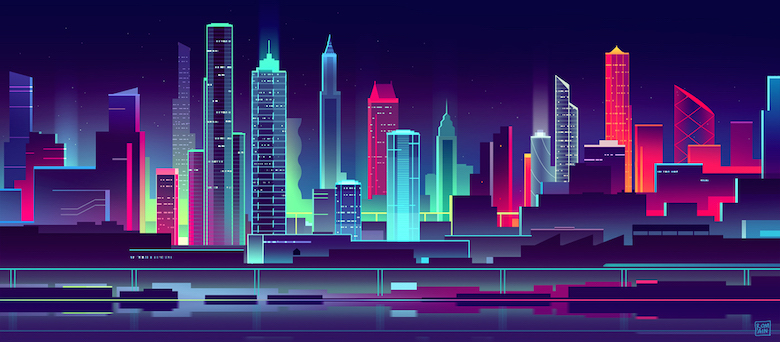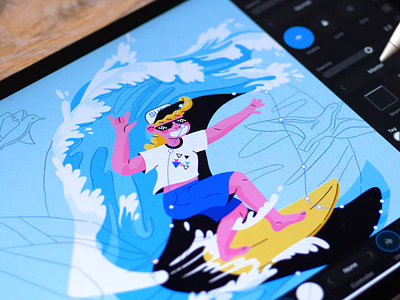R/AffinityPhoto: A subreddit devoted to the new and unique MAC digital photo editing application, Affinity Photo. Press J to jump to the feed. Press question mark to learn the rest of the keyboard shortcuts. I did find some info for a cartoon or graphic novel effect which doesn't do what I want. Learn affinity photo from the best affinity photo courses and best affinity photo tutorials online. Select best courses for affinity photo based on your skill level either beginner or expert. These are the best affinity photo tutorials and courses to learn affinity photo step by step. Collection of best Affinity Photo Courses.
- Cartoon yourself and convert your photo and picture into cartoon effect in one click, directly online and for free. Cartoon Yourself is 100% online, you don't have to.
- Affinity Photo is part of the Affinity Suite, which also includes Affinity Designer and Affinity Publisher. It is behind in terms of advanced capabilities, but well suited for advanced image editing for even most professional photographers. Affinity Photo Review Overall Rating: 4.0 (out of 5).
What exactly is a blend mode?
In graphic design or digital art, more complex designs use multiple layers stacked on top of each other. The pixels of the higher layers are placed on top of pixels on lower layers, obscuring them in the process. While this default behaviour is perfectly acceptable, the use of blend modes across these layers opens up a world of creative freedom and possibilities.
Essentially, blend modes determine exactly how an upper layer’s pixel colours will blend with those on the layer(s) beneath. Results can vary quite dramatically depending on the chosen mode. There are five or six most commonly used modes but anywhere up to 30 modes may be available in your app.
Tip: Experimentation is key! Blending results depend entirely on the images you’re working with.Before we go any further…
- Remember that blending affects all underlying layers not just the layer immediately below the blend layer.
- Blend mode names, such as Multiply, Overlay, and Screen are pretty much the same across all graphic design and photo editing apps. They function in much the same way too.
Multiply
How it works
This is your choice for a darkening effect. It multiplies the blend layer’s colour channel values with those of the base layer. Black in either layer gives black; white leaves the other layer’s colour unchanged. Lighter greys will give softer shadows, while darker greys will give deeper shadows. Why? Well, black has a value of 0, and white has a value of 1, and all other multiplied values are divided by 255. “Class, get your calculators out!”
Some other cool examples and applications

- Restoring shadows in faded antique photos
- Darkening of filters (e.g., Lighting)
- Toning down overexposed photos
- Removing white backgrounds in image composites (without having to cut out)
Screen
How it works
So if Multiply darkens, then Screen will lighten—the complete opposite! Black is assigned a value of 1, white is assigned 0; the latter produces white. The inverse of the blend and base layer colours are multiplied. The resulting colour is always lighter.
Other examples
- Boosting underexposed photos
- Removing black backgrounds in image composites (without having to cut out)
Cartoon Effect In Affinity Photo
Overlay
How it works
Meet the clever combination of the above—Multiply and Screen combined together to increase contrast. In essence, it darkens darker areas, while lighter areas are lightened further. If the underlying layer’s pixels are <50% grey, it multiplies; if >50%, it screens.
Cartoon Effect Affinity Photo
Other examples

A cool example of using flat colours with blend modes over images is put to effect in the following example, where we strip an image of its colour and use a Multiply blend mode to effectively colourize non-white & black areas of an image—in this case, all the grey tints. You can see this effect commonly in model studio shots used as artist covers in music streaming services, etc.
Other blend modes
In reality, there are many other blend modes that can be used which offer more subtle and harsher blending effects. Their use is less common so they’re not included in this article—but you can experiment accordingly!
More about blend modes
Most apps will also offer ‘on-brush’ blend modes so you can paint colour that will blend into the base layers as you paint. It’s worth trying these out if you want to blend layer content but only want to do so in specific brushed regions.
Blend modes are just as important in vector-based graphic design as in pixel-based raster design. The blend modes operate very similarly between the two disciplines with a slight difference: in the former, a chosen mode is applied to the selected object, with blending between that object and objects beneath, as opposed to the latter which is pixel layer over pixel layer.

Finishing up
That just about wraps up this article. I hope it’s given you some insight into the inner workings and application of blend modes.The next time you’re throwing some layers around, try a few blend modes out and see where they lead you!
- Assign the Affinity Designer to be the default image editor.
- Click the Affinity Designer button on the Add-on Tool Bar.
- In the following Launch PSD Editor dialog, click the New Object button to create new assets, or click the Open File button to edit existing assets with the image editor.
- By clicking the New Object button, the Affinity Designer application will automatically launch with a new file tab named Default. You can now Start to create your PSD project.
- If you want to use the hot keys: Ctrl + S to quickly save your changes back to the Cartoon Animator, you have to activate the Enable 'Save' over imported PSD files check box under the General setting group of Preferences. Note:
- The Enable 'Save' over imported PSD files feature is supported by Affinity Designer version 1.7 or above only.
- Display all the image layers you need before sending or exporting to Cartoon Animator. Otherwise, the invisible image layers will be ignored by Affinity Designer.
- In the synced status, the PSD editor will switch to the project file tab automatically once you click the icon, but Affinity Designer will launch the application only. You have to locate the project file tab manually for the target object.
